-
- PCB TYPE
- PRINTED CIRCUIT BOARD PROTOTYPE ALUMINUM PRINTED CIRCUIT BOARD R&F PCB FPC HIGH FREQUENCY PCB HIGH-TG PCB HEAVY COPPER PCB HDI PCB PCB FOR LIGHTING METAL CORE PCB
time:Jul 11. 2025, 09:14:42
In the intricate ecosystem of contemporary electronics, printed circuit boards (PCBs) serve as the fundamental infrastructure that enables the seamless operation of countless devices. Among the diverse PCB technologies available, aluminum PCBs have emerged as a standout solution, offering a compelling combination of thermal management prowess, mechanical durability, and electrical performance. This article embarks on an in - depth exploration of aluminum PCBs, dissecting their material composition, design intricacies, manufacturing processes, real - world applications, and emerging trends, thereby illuminating their indispensable role in driving the evolution of modern electronics.
Material Composition: The Building Blocks of Aluminum PCBs
Aluminum Substrate: A Thermal and Mechanical Marvel
The aluminum substrate is the cornerstone of aluminum PCBs, endowing them with distinctive characteristics. Aluminum's high thermal conductivity is a defining feature, providing an efficient conduit for dissipating the heat generated by power - intensive electronic components. In electronic systems, heat accumulation can lead to a cascade of issues, including component degradation, performance decline, and shortened lifespan. The aluminum substrate acts as an effective heat sink, rapidly conducting heat away from critical components and facilitating its dispersion into the surrounding environment. This ensures that components operate within their optimal temperature thresholds, safeguarding the integrity and reliability of the entire electronic system.
Beyond its thermal management capabilities, the aluminum substrate offers remarkable mechanical properties. Its favorable strength - to - weight ratio allows aluminum PCBs to withstand mechanical stresses such as vibrations, shocks, and impacts, making them well - suited for applications in challenging environments. Whether it's the constant vibrations experienced by automotive electronics on the road or the extreme conditions encountered by aerospace systems during flight, the aluminum substrate provides a robust foundation that ensures the longevity and functionality of the PCB. Moreover, aluminum's malleability enables the creation of PCBs in a variety of shapes and sizes, offering designers the flexibility to meet the diverse form factor requirements of modern electronic devices.
Dielectric Layers: Striking the Balance
Sandwiched between the aluminum substrate and the copper conductive layers, the dielectric layers in aluminum PCBs play a crucial dual - role. Functionally, they act as insulators, preventing electrical short circuits between the aluminum core and the copper traces. This insulation is essential for maintaining the integrity of the electrical signals and power delivery within the PCB, ensuring the proper operation of the electronic components mounted on it.
Simultaneously, the dielectric layers are engineered to have good thermal conductivity, serving as a thermal bridge that facilitates the transfer of heat from the components to the aluminum substrate. The selection of dielectric material is a critical decision, as it directly influences the thermal resistance of the PCB. High - quality dielectric materials, such as ceramic - filled epoxies or polyimides, are carefully chosen to strike the optimal balance between electrical insulation and thermal transfer. By minimizing thermal resistance, these materials enhance the overall thermal performance of the PCB, enabling more efficient heat dissipation and better component performance.
Copper Layers: Conducting the Electronic Symphony
Copper, renowned for its exceptional electrical conductivity, forms the conductive layers of aluminum PCBs. These copper layers are meticulously patterned to create traces that serve as the pathways for both electrical signals and power transmission. In the case of signal traces, precise routing is of paramount importance, especially in high - frequency applications where signal interference can lead to data corruption and system malfunctions.
For power traces, the design focuses on minimizing resistance to ensure efficient power delivery. By reducing power losses as heat during the transmission of electrical energy, the copper layers contribute to the overall energy efficiency of the electronic system. The thickness and width of the copper traces are carefully optimized based on the power requirements of the components, ensuring a stable and reliable power supply that is essential for the proper functioning of the electronic device.
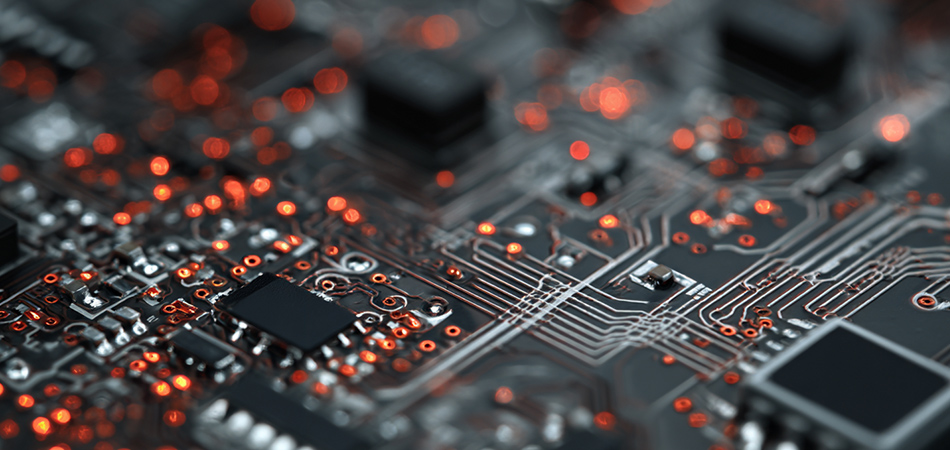
Design Considerations: Crafting for Optimal Performance
Thermal Management Design: Keeping the Heat in Check
Effective thermal management is the linchpin of successful aluminum PCB design. Component placement is a critical factor in this regard. Heat - generating components, such as integrated circuits, power transistors, and LEDs, should be strategically positioned to maximize heat transfer to the aluminum substrate. This direct contact reduces thermal resistance, enabling heat to flow more efficiently away from the components and towards the heat - dissipating substrate.
Thermal vias, small holes filled with a conductive material, are often incorporated into the design to enhance heat dissipation. These vias create additional pathways for heat to flow from the upper copper layers to the aluminum base, further reducing thermal resistance and improving the overall thermal performance of the PCB. In some cases, the aluminum base itself may be designed with specialized heat - dissipating features, such as fins or ridges, to increase the surface area available for heat transfer and enhance cooling efficiency. For high - power applications, external heat sinks or cooling fans may be integrated with the PCB to ensure that the components remain within their safe operating temperature range.
Electrical Design: Ensuring Signal Integrity and Power Delivery
The electrical design of aluminum PCBs focuses on two key aspects: reliable power delivery and signal integrity. Power distribution networks are carefully engineered to provide a stable voltage and current to the components. This involves the creation of power planes, which are large areas of copper that distribute power evenly across the PCB, minimizing voltage drops and ensuring that all components receive the necessary power.
For signal transmission, especially in high - speed digital circuits, impedance control is crucial. The traces are designed to have a specific impedance that matches the requirements of the components, minimizing signal reflections and ensuring accurate signal transmission. Grounding strategies also play a vital role in electrical design. A well - designed grounding scheme helps to reduce electromagnetic interference (EMI) and noise, improving the overall performance and reliability of the circuit.
Mechanical Design: Building for Durability and Integration
Mechanical design considerations for aluminum PCBs encompass the form factor, mounting options, and structural integrity. The PCB must be designed to fit seamlessly into the enclosure of the electronic device, with appropriate mounting holes and features that ensure a secure and stable installation. The thickness of the PCB, as well as the strength of the aluminum substrate, needs to be carefully considered to ensure that it can withstand the mechanical stresses associated with handling, installation, and operation.
In addition, the mechanical design should prioritize component protection. This may involve the addition of mechanical supports, enclosures, or shielding to safeguard sensitive components from physical damage, electromagnetic interference, and other environmental factors. The design should also facilitate the assembly process, making it easy to mount components onto the PCB and connect it to other parts of the electronic device, thereby reducing manufacturing time and costs.
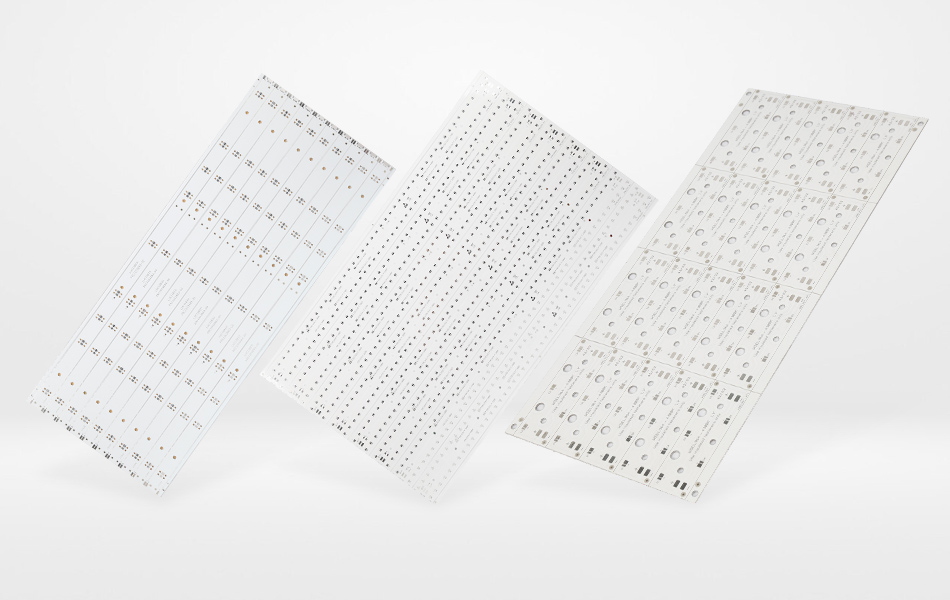
Manufacturing Processes: From Raw Materials to Finished Product
Substrate Preparation: Laying the Groundwork
The manufacturing process of aluminum PCBs commences with substrate preparation. The aluminum substrate is first cut to the desired size and shape using precision cutting techniques, such as CNC machining or laser cutting. After cutting, the surface of the aluminum substrate undergoes a series of treatments, including cleaning, degreasing, and surface roughening. These surface treatments are essential for improving the adhesion of the dielectric layers, ensuring a strong and reliable bond between the layers that is critical for the performance and longevity of the PCB.
Dielectric Layer Lamination: Creating a Solid Foundation
Once the substrate is prepared, the dielectric layers are laminated onto the aluminum surface. High - pressure lamination processes are employed to bond the dielectric materials firmly to the aluminum substrate. The lamination process requires precise control of temperature, pressure, and time to achieve a uniform and defect - free bond. The quality of the lamination directly impacts the thermal and electrical performance of the PCB, as well as its mechanical strength. Any imperfections in the lamination process can lead to thermal resistance issues, electrical insulation failures, or mechanical weaknesses in the PCB.
Copper Layer Fabrication: Crafting the Conductive Pathways
The fabrication of the copper layers is a multi - step process. First, a copper foil is laminated onto the dielectric - coated aluminum substrate. Photolithography or laser direct imaging (LDI) techniques are then utilized to transfer the circuit pattern onto the copper foil with high precision. Chemical etching follows, selectively removing the unwanted copper to create the desired conductive traces and pads. The copper layer fabrication process demands meticulous attention to detail to ensure accurate trace widths and spacing, especially for fine - pitch designs. Any deviations in the copper layer fabrication can result in electrical performance issues, such as increased resistance, signal attenuation, or short circuits.
Surface Finishing and Assembly: The Final Touches
To protect the copper traces and enhance solderability, surface finishing processes are applied. Common surface finishes for aluminum PCBs include electroless nickel immersion gold (ENIG), organic solderability preservative (OSP), and hot air solder leveling (HASL). Each surface finish offers unique advantages and is selected based on the specific requirements of the application, such as corrosion resistance, solderability, and cost - effectiveness.
Once the surface finishing is complete, the components are assembled onto the PCB using automated pick - and - place machines. Reflow soldering or wave soldering processes are then employed to attach the components securely to the board. The assembly process requires careful control to ensure proper alignment and soldering of the components. Any defects in the assembly can lead to functional failures of the electronic device, highlighting the importance of quality control at this stage of the manufacturing process.
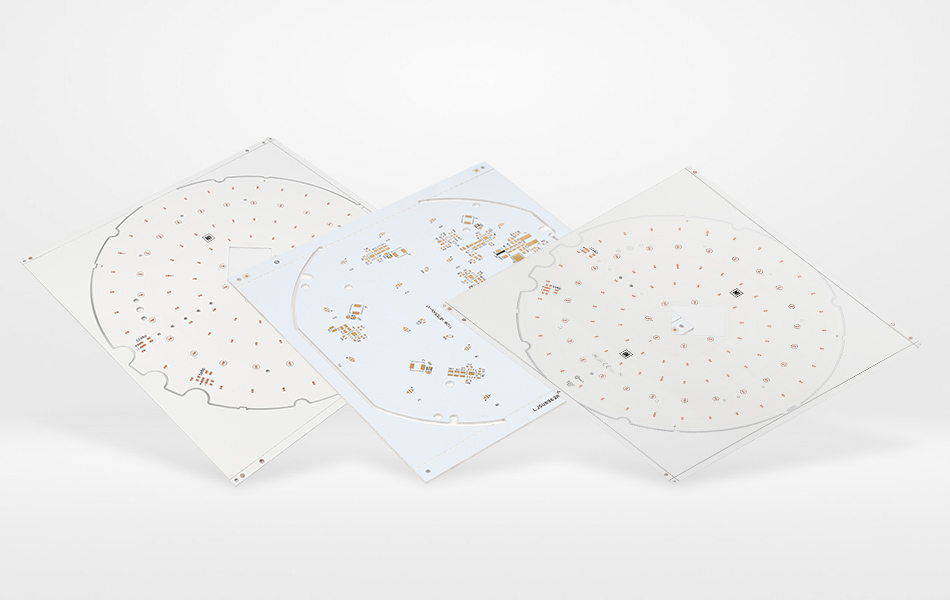
Real - World Applications: Where Aluminum PCBs Shine
LED Lighting: Illuminating the Way
In the LED lighting industry, aluminum PCBs have become the preferred choice for thermal management. LEDs generate a significant amount of heat during operation, and effective heat dissipation is essential for maintaining their performance and extending their lifespan. The high thermal conductivity of the aluminum substrate in these PCBs ensures that the heat generated by the LEDs is quickly dissipated, preventing overheating and maintaining consistent light output.
Aluminum PCBs also enable the creation of compact and lightweight LED lighting fixtures. Their mechanical strength allows them to withstand the rigors of installation and operation in various environments, from indoor residential and commercial lighting to outdoor streetlights and landscape lighting. Additionally, the design flexibility of these PCBs facilitates the integration of advanced features such as dimming control, color - changing capabilities, and smart lighting functionality, enhancing the versatility and energy efficiency of LED lighting systems.
Power Electronics: Harnessing the Power
Power electronics, including power supplies, inverters, and motor controllers, often deal with high - power components that generate substantial heat. Aluminum PCBs are well - equipped to handle these demanding applications due to their excellent thermal management capabilities. They can efficiently dissipate the heat generated by power - semiconductor devices, such as IGBTs and MOSFETs, ensuring stable operation and preventing thermal runaway.
The mechanical strength of aluminum PCBs makes them suitable for use in industrial environments, where they may be exposed to vibrations, shocks, and temperature fluctuations. Their ability to support high - density component integration allows for the creation of compact and efficient power electronic systems, reducing the overall size and weight of the equipment while maintaining high performance and reliability.
Automotive Electronics: Driving Innovation
The automotive industry places stringent requirements on the reliability and performance of electronic components. Aluminum PCBs meet these requirements with their combination of thermal management, mechanical strength, and electrical reliability. They are used in a wide range of automotive applications, including engine control units (ECUs), advanced driver - assistance systems (ADAS), automotive lighting, and infotainment systems.
In ECUs, aluminum PCBs help to manage the heat generated by the microprocessors and other components, ensuring stable operation even in the harsh under - hood environment. In ADAS systems, which rely on high - performance sensors and processors, these PCBs provide the necessary thermal and electrical support for reliable operation. In automotive lighting, they enable the integration of high - power LEDs in a compact and reliable manner, enhancing visibility and safety on the road.
Aerospace and Defense: Reaching New Heights
In aerospace and defense applications, where weight, reliability, and performance are of critical importance, aluminum PCBs have found widespread adoption. Their lightweight nature helps to reduce the overall weight of aircraft and spacecraft, improving fuel efficiency and performance. At the same time, their high thermal conductivity and mechanical strength ensure reliable operation in extreme environments, including high altitudes, high temperatures, and high levels of radiation.
Aluminum PCBs are used in avionics systems, communication equipment, military electronics, and satellite applications. They can withstand the vibrations and shocks experienced during flight and operation, providing a stable platform for the electronic components. Their ability to support high - density integration also allows for the miniaturization of electronic systems, which is essential in aerospace and defense applications where space is at a premium.
Consumer Electronics: Enhancing the User Experience
Consumer electronics, such as laptops, tablets, smartphones, and gaming consoles, are constantly evolving to become smaller, more powerful, and more energy - efficient. Aluminum PCBs play a crucial role in this evolution by providing efficient thermal management and supporting high - density component integration.
In laptops and tablets, these PCBs help to manage the heat generated by the processors and other components, ensuring stable performance and preventing overheating. In smartphones and gaming consoles, their ability to support compact designs and high - speed signal transmission is essential for delivering a seamless user experience. The mechanical strength of aluminum PCBs also provides protection for the components, making the devices more durable and resistant to accidental drops and impacts.
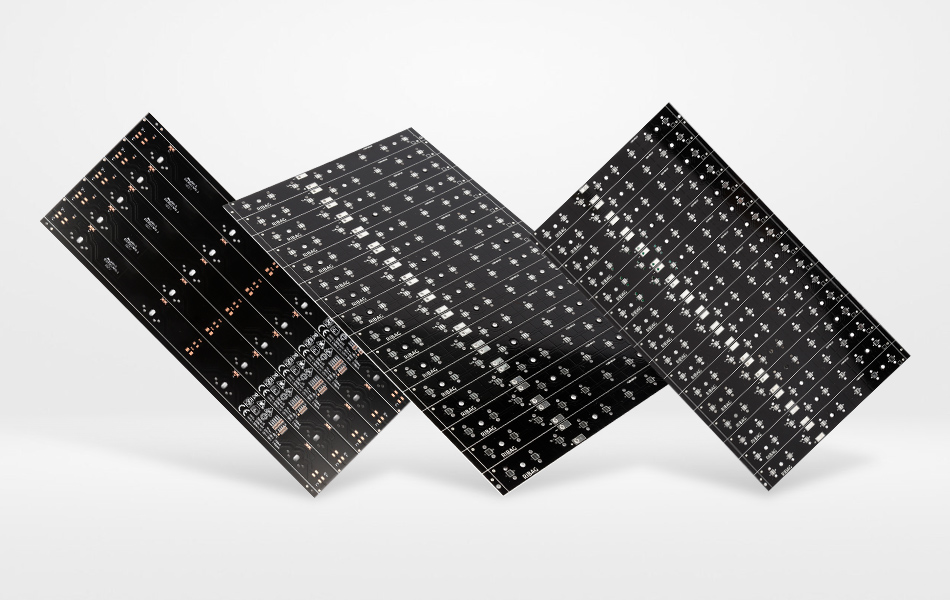
Emerging Trends: Shaping the Future of Aluminum PCBs
Integration with Smart Technologies
As the Internet of Things (IoT), artificial intelligence (AI), and 5G communication technologies continue to gain momentum, aluminum PCBs are poised to play an even more significant role. They will be integrated with sensors, microcontrollers, wireless communication modules, and other smart components to create intelligent and connected electronic devices. These devices will be able to collect, process, and transmit data in real - time, enabling remote monitoring, control, and automation in a wide range of applications, from smart homes and cities to industrial IoT and healthcare.
The integration of these smart technologies with aluminum PCBs will require new design and manufacturing techniques to ensure reliable operation, efficient performance, and seamless connectivity. It will also present opportunities for innovation in areas such as energy management, data analytics, and security, driving the development of next - generation electronic devices that are more intelligent, sustainable, and user - friendly.
Miniaturization and High - Density Integration
The trend towards miniaturization in electronics is driving the development of smaller and more densely populated PCBs. Aluminum PCBs are no exception to this trend. Advanced manufacturing techniques, such as micro - via technology, fine - pitch trace routing, and 3D packaging, are being used to create PCBs with higher component densities while maintaining or even improving performance.
This miniaturization trend is particularly evident in wearable electronics, medical implants, and other portable devices, where space is at a premium. Aluminum PCBs with high - density integration capabilities will enable the creation of smaller, more powerful, and more energy - efficient devices that can be seamlessly integrated into our daily lives. However, miniaturization also poses challenges in terms of thermal management, signal integrity, and power delivery, which will require innovative design solutions and advanced materials to overcome.
Sustainable Manufacturing Practices
With growing environmental awareness and the increasing focus on sustainability, the electronics industry is shifting towards more sustainable manufacturing practices. Aluminum PCB manufacturers are exploring ways to use recycled materials, reduce energy consumption during production, and minimize waste generation.
Recycled aluminum can be used to produce the aluminum substrate, reducing the demand for virgin materials and minimizing the environmental impact of mining and extraction. Energy - efficient manufacturing processes, such as using renewable energy sources, optimizing production equipment, and implementing lean manufacturing principles, can help to reduce the carbon footprint of PCB manufacturing. Additionally, efforts are being made to develop more recyclable PCB materials and processes, making the entire lifecycle of aluminum PCBs more environmentally friendly.
Advanced Thermal Management Solutions
As electronic components become more powerful and generate more heat, there is a growing need for advanced thermal management solutions in aluminum PCBs. New materials and technologies, such as phase - change materials, heat pipes, vapor chambers, and liquid cooling systems, are being integrated with aluminum PCBs to handle higher heat loads and improve thermal performance.
Phase - change materials can absorb and store heat, providing passive thermal management and reducing the peak temperature of the components. Heat pipes and vapor chambers can transfer heat more efficiently over longer distances, enabling better heat dissipation in complex PCB designs. Liquid cooling systems can provide active thermal management, offering high - performance cooling for high - power applications. These advanced thermal management solutions will be essential for the development of future - generation electronic devices, such as high - performance computing systems, data centers, and electric vehicles.
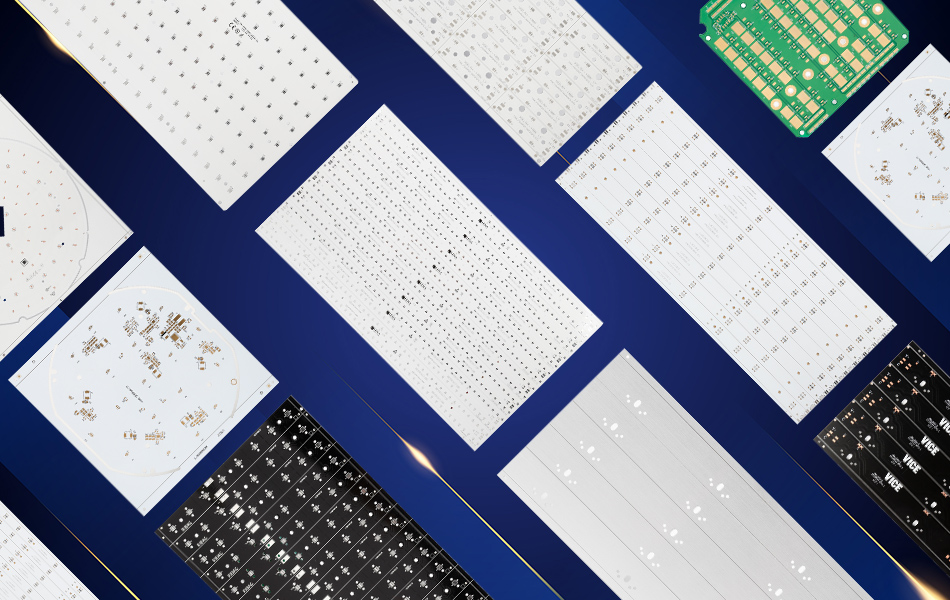
Conclusion
Aluminum PCBs have emerged as a game - changing technology in the field of electronics, offering a unique combination of thermal management, mechanical strength, and electrical reliability. Their applications span a wide range of industries, from LED lighting and power electronics to automotive, aerospace, and consumer electronics, making them an integral part of modern electronic systems.
As technology continues to evolve at an unprecedented pace, aluminum PCBs will play an even more crucial role in the development of future - proof electronic devices. By embracing emerging trends such as integration with smart technologies, miniaturization, sustainable manufacturing, and advanced thermal management, the industry can unlock the full potential of aluminum PCBs and drive innovation in the electronics sector. The future of aluminum PCBs is bright, and their continued evolution will undoubtedly shape the way we live, work, and interact with technology in the years to come.

Got project ready to assembly? Contact us: info@apollopcb.com



We're not around but we still want to hear from you! Leave us a note:

Leave Message to APOLLOPCB
